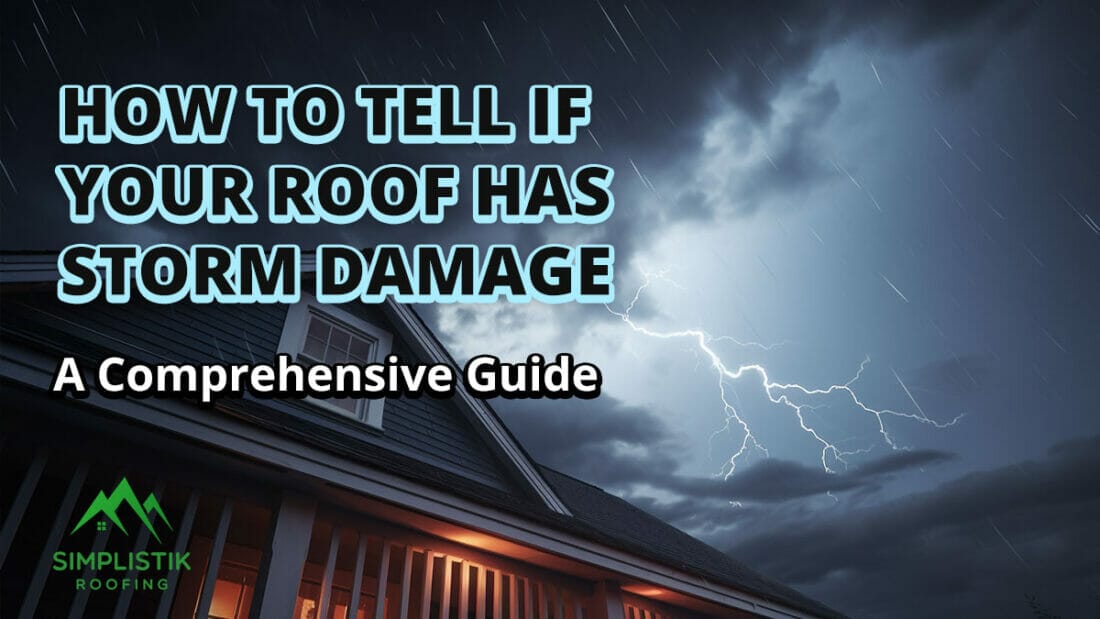How to Tell If Your Roof Has Storm Damage: A Comprehensive Guide
Storms, from heavy winds and hail to torrential rains and blizzards, can be harsh on your home, and your roof bears the brunt of these weather patterns. Detecting storm damage on your roof early can save you from more significant and costly repairs down the line. This comprehensive guide will help you learn how to determine if your roof has suffered storm damage.
What Constitutes Storm Damage?
Storm damage to a roof can take several forms, but the most common ones include:
- Hail Damage: Hailstones can cause dents or cracks in your shingles, dislodge the protective granules, or even puncture your roof in severe cases.
- Wind Damage: Strong winds can loosen, rip off, or blow away shingles, leaving your roof exposed to the elements.
- Rain Damage: Persistent, heavy rain can exploit any vulnerabilities in your roof, leading to leaks and water damage.
- Snow and Ice Damage: The weight of snow and ice can strain your roof, while thawing and refreezing can lead to ice dams that can push up shingles and create a path for water to seep into your home.
Understanding these types of damage can assist you in identifying possible problem areas when inspecting your roof post-storm.
Assessing Your Roof for Storm Damage: An Inside-Out Approach
Interior Inspection

Begin your storm damage assessment from the inside of your home. Look for signs of water damage such as:
- Water Stains: Check your ceilings and walls for brown, yellow, or gray stains.
- Peeling Paint or Wallpaper: Water seepage can cause your paint or wallpaper to bubble or peel.
- Mold or Mildew Smell: A persistent musty smell could indicate hidden water damage.
- Damp Insulation: If your attic insulation is damp or the room feels unusually humid, there might be a leak.
Exterior Inspection

After checking the interior, it’s time to inspect the roof itself. Here’s what to look for:
- Missing or Damaged Shingles: Search for shingles that are cracked, torn, curled, or missing entirely. They may also have visible signs of hail impact, such as dents or bruises.
- Lost Granules: Granules give shingles their texture and provide protection against UV rays and fire. A loss of granules, which often look like black sand in your gutters or downspouts, can be a sign of storm damage.
- Damage to Flashing or Sealant: Flashing around vents, chimneys, and roof peaks can be loosened or damaged by storms, leading to potential leaks.
- Dents on Metal Roofs or Gutters: Hail or wind-blown debris can cause visible dents on metal surfaces.
- Signs of Ice Dams: In winter, watch for icicles hanging from the eaves, as this could be a sign of ice dams that can cause water to back up under your shingles.
Professional Inspection
If you’ve noticed signs of storm damage or if you’re unsure about assessing your roof’s condition, it’s time to call in a professional. Roofing contractors have the knowledge and equipment to conduct a thorough inspection safely. They can identify hidden damage, make necessary repairs, or recommend if a full roof replacement is needed.
Documenting the Damage
If you’ve discovered storm damage, document it thoroughly for insurance purposes. Take clear, dated photographs of all affected areas. If you’ve had a professional inspection, ask the contractor for a written report detailing the damage.
Filing an Insurance Claim
Once you’ve documented the damage, contact your insurance company to file a claim. They’ll typically send an adjuster to assess the damage. Provide the adjuster with all your documentation to support your claim.
Remember, it’s crucial to carry out any necessary temporary repairs to prevent further damage. Keep the receipts for any work done or materials purchased, as these costs may be recoverable under your policy.
Conclusion
Storms can be devastating to your roof, but knowing how to identify the damage they cause can help you address the issue promptly, saving you time, money, and stress. Regular roof inspections and maintenance can also prepare your roof to weather future storms more effectively. If you suspect your roof has storm damage, don’t hesitate to seek professional help. The integrity of your roof is paramount to the safety and comfort of your home.
